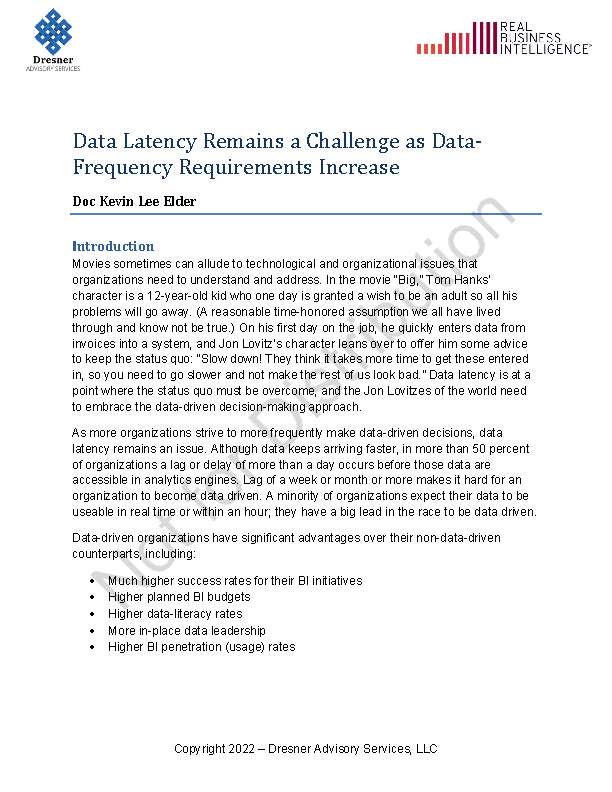
As more organizations strive to more frequently make data-driven decisions, data latency remains an issue. Although data keeps arriving faster, in more than 50 percent of organizations a lag or delay of more than a day occurs before those data are accessible in analytics engines. Lag of a week or month or more makes it hard for an organization to become data driven. A minority of organizations expect their data to be usable in real time or within an hour; they have a big lead in the race to be data driven.
Solving data latency should be a priority for many organizations so that data is accessible sooner—maybe sooner than associates request it—to better ensure data-driven decision making. However, equally important to faster data is the need for processes—some of which have legacy components that can be decades old—to adapt or undergo wholesale updating to address lower data-latency rates. Such revisions not only require system updates but also can require significant change-management efforts to address not only the processes but the people that use them.
Lowering data latency also significantly can help foster a data culture by making more relevant data available to inform a greater number of business decisions. Achieving such a culture may require many shifts and transitions to ultimately transform an organization into a data-driven one. With high data-latency remaining the norm in most organizations, this represents a hurdle to overcome on the path to a data-driven culture.
You do not have permission to access this document. Make sure you are logged in and/or please contact Danielle with further questions.